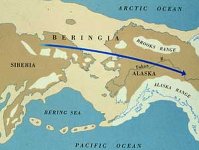dcwolf
New member
Still quite the attacker after all these years?Where did you get such a nonsensicalThe scientific history of Earth indicates the opposite. Four of the five largest mass extinctions in the planet's history have occurred due to global warming.In fact global cooling is probably worse than global warming.
That is the result we're faced with. Not just in the animal kingdom but also whole foods...
I was a bit careless in how I phrased my response. But the general theme is the same. Increased CO2, which causes warming, ocean acidification and euxinic events, has probably been the driver for most mass extinctions.
From this paper
One they don't mention, but is shown in Figure 1, is the Mid-Miocene Climatic Optimum, which resulted from a large igneous province (Columbia River Basalts). It was a smaller LIP, and the extinction event was smaller, but the mechanism was the same with increased CO2 levels, temperatures, and ocean acidification.the 23 most conspicuous mass extinctions of the Phanerozoic (including the late Ediacaran), 4 are associated with ice-volume-related regressions, and 3 are problematic. We suggest that the other 16 mass extinctions occurred when Greenhouse climate was forced to Hothouse climate.
Neil DeGrasse Tyson explains the rammifications of increased ocean acidity in this video
From Veron 2008
The reef gaps all coincide with the five largest mass extinctions.Fig. 3 Atmospheric CO2 in parts per million (ppm) over the time of the existence of reefs. The vertical bars are the intervals of reef gaps following the five great mass extinction events. Broken lines indicate doubtful reconstructions. All reef gaps, with the exception of the Late Devonian, are probably associated with rapidly increasing or high CO2 levels (after Veron 2008)
The author explains that another couple of decades with greenhouse gas emissions similar to those of the previous couple decades will seal our fate from which there will be no recourse.Ultimately—and here we are looking at centuries rather than millennia—the ocean pH will drop to a point at which a host of other chemical changes, including anoxia, would be expected. If this happens, the state of the oceans at the end of K/T, or something like it, will become a reality and the Earth will enter the sixth mass extinction. Another 1–3 decades like our last will see the Earth committed to a
trajectory from which there will be no escape.
In paleoclimate science, yes, there is rarely cut-and-dry evidence for a culprit. But the evidence weighs much more in favor of increasing CO2 than decreasing as the culprit the majority of the time. To suggest that cooling would be worse than warming simply is not based in scientific reality.

